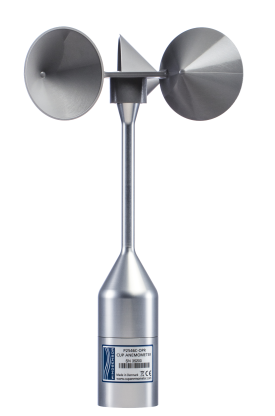Anemometer Innovations: The Current Innovation for Wind Speed Dimension
Anemometer Innovations: The Current Innovation for Wind Speed Dimension
Blog Article
Anemometers Unveiled: Understanding Their Significance in Environmental Monitoring and Security Procedures
The function of anemometers in ecological tracking and safety procedures is typically underestimated, yet their value is undeniable. From weather forecasting to aviation safety and security, anemometers play an important duty in offering exact data that educates decision-making processes and improves total safety.
Background of Anemometers
The evolution of anemometers can be mapped back to the old worlds where primary wind determining tools were first used. These very early wind measurement devices laid the structure for the development of extra sophisticated anemometers gradually. One of the earliest recognized anemometers was the hemispherical mug anemometer invented by Leon Battista Alberti in the 15th century. This style was composed of 4 hemispherical mugs that collected wind energy, offering a measurement of its strength based on the speed of turning.
In the 18th century, the popular scientist John Thomas Romney Robinson presented the Robinson anemometer, which included 4 hemispherical mugs placed on horizontal arms that extended from a central axis. This design ended up being a requirement in atmospheric dimensions as a result of its precision and reliability. Over the years, developments in modern technology brought about the growth of even more modern-day anemometers, consisting of ultrasonic anemometers and laser Doppler anemometers, supplying raised accuracy and performance in gauging wind rate and instructions. The background of anemometers showcases an impressive trip of technology and progression in the area of weather forecasting.
Sorts Of Anemometers
Throughout the area of meteorology, numerous types of anemometers have been created to accurately determine wind rate and direction. Sonic anemometers utilize ultrasonic signals to measure wind speed and instructions properly. Hot-wire anemometers operate based on the concept that the cooling result of wind on a heated cable is symmetrical to the wind rate.
Applications in Meteorology
Having actually reviewed the various sorts of anemometers used in meteorology for determining wind rate and instructions, it is essential to explore their useful applications in the field. Anemometers play a vital duty in weather forecasting by giving accurate and real-time data on wind problems (anemometer). Meteorologists make use of anemometers to monitor wind speed and direction to anticipate climate patterns, concern cautions for extreme weather condition occasions like tornadoes, tornados, and storms, and analyze weather for aviation safety
In weather forecasting, anemometers assist in comprehending regional and regional wind patterns, which are crucial for forecasting weather changes and establishing weather fads. These gadgets are additionally click this site made use of in research study to examine microclimates, urban warmth islands, and air contamination dispersion. Additionally, anemometers are used in agriculture to optimize plant management techniques, such as watering and pesticide application, based upon wind conditions.
Relevance in Air Travel Safety
An essential facet of making sure aviation security lies in the thorough tracking of wind problems using anemometers. Anemometers play a crucial duty in aviation by supplying real-time data on wind speed and instructions, aiding pilots in making educated decisions during touchdown, trip, and take-off. Solid and unforeseeable winds can dramatically affect aircraft procedures, making it necessary for aviation authorities to rely upon exact wind dimensions to make certain the safety of passengers and staff.

In the vibrant atmosphere of aeronautics, where even minor adjustments in wind speed and instructions can have extensive effects, anemometers stand as crucial tools for promoting safe and safe air travel.
Duty in Environmental Study
Anemometers play an important function in ecological research study by supplying necessary information on wind speed and instructions. By precisely measuring wind qualities, anemometers help researchers examine the activity of contaminants in the air, analyze the impact of commercial discharges, and anticipate the spread of pollutants in the atmosphere.


Conclusion
In final thought, anemometers have played a crucial duty in environmental surveillance and security steps. Recognizing the importance of anemometers is important for properly determining wind rate and direction, which is essential for anticipating weather patterns, making sure safe aeronautics operations, and carrying out environmental researches.
One of the earliest known anemometers was the hemispherical mug anemometer created by Leon Battista Alberti in the 15th century. Over the years, advancements in innovation led to the growth of more modern-day anemometers, including ultrasonic anemometers and laser Doppler anemometers, using raised precision and performance in measuring wind rate and instructions. Hot-wire anemometers operate based on the concept that the cooling effect of wind on a warmed cord is proportional to the wind speed. Meteorologists make use of anemometers to keep track of wind rate and instructions to forecast weather patterns, problem cautions for severe weather occasions like tornadoes, cyclones, and tornados, and analyze atmospheric conditions for aeronautics safety and security.
Understanding the relevance of anemometers is vital for precisely gauging wind speed and direction, which is crucial for predicting weather condition patterns, making sure secure aeronautics procedures, and performing ecological researches. (anemometer)
Report this page